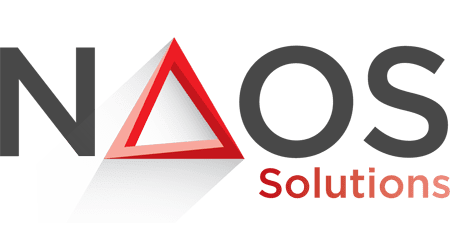Recruitment Strategies are evolving as technological advancements and shifting market trends drive continuous change in the corporate sector. Companies must actively seek top talent to innovate and remain relevant, but traditional methods often fall short. Forbes data reveals that 46% of HR professionals aim to recruit talented employees but struggle to do so. This challenge highlights the need for a fresh, creative approach to attracting top-notch candidates.

This article delves into innovative recruitment strategies that can help you draw in the brightest candidates and solidify your company’s position in the industry. We will provide actionable insights and practical tips to enhance your recruitment process, ensuring you attract and retain the best talent in a competitive market.
THE RECRUITMENT LANDSCAPE: FUNDAMENTALS, TRENDS, AND ECONOMIC INFLUENCE
At its core, recruitment involves matching the right talent with the right opportunities. The fundamental steps (sourcing, attracting, screening, and selecting the candidates) remain constant. However, the methods used to execute these steps have evolved greatly.
Here’s an overview.
Current Trends In the Recruitment Market
The recruitment market is experiencing several transformative trends.
- The competition for top talent is becoming fiercer. According to Khaleej Times, companies in the Middle East and North Africa (MENA) region are struggling to source talent due to the region’s exceptional growth. Besides, the market faces a scarcity of individuals with the essential skills for key jobs.
- Technological advancements and changing employee preferences demand a shift toward flexible work. A survey shows that 85% of MENA residents prefer working from home. This transition has expanded the talent pool. Put simply, companies can now attract candidates from diverse geographic locations.
- Digital transformation is positively impacting recruitment. Companies are actively using AI to optimize candidate sourcing and screening. This has made the recruitment process more efficient than ever.
Economic Factors Influencing Recruitment
Economic stability plays a critical role in shaping recruitment strategies. For instance, during periods of economic growth, companies often expand their workforce (which increases the competition for top talent).
Conversely, an economic downturn leads to hiring freezes or layoffs. This results in a larger pool of candidates available but fewer job openings.
According to World Bank economists, the MENA region is projected to experience a moderate growth rate of 2.7% in 2024 (an increase from 1.9% in the previous year).
This anticipated economic growth will likely increase the competition for top talent, and companies will expand and seek to fill new positions.

Industry-Specific Challenges
Recruitment strategies must address industry-specific challenges, such as exceptionally high turnover rates and seasonal hiring demands.
The departments facing high turnover rates in the MENA region include Sales and Marketing, with a staggering 43.9%, followed by IT at 14.3%. This requires companies to implement innovative recruitment and retention strategies to keep the employees engaged and reduce churn.
Seasonal hiring demands add another layer of complexity. For instance, the recruitment industry becomes more active in certain months (think of Ramadan month or the beginning of the year). This necessitates aligning recruitment efforts with periods of fluctuating demand.
Specificity of the AI-IT Industry
The IT industry, particularly the Artificial Intelligence sector, faces unique challenges. The rapid adoption of AI technologies has significantly transformed the talent market, leading to a heightened demand for specialized skills in generative AI, machine learning, and data science (McKinsey & Company).
- Countries like the UAE and Saudi Arabia have invested significantly in AI, aiming to position themselves as leaders in this field. For example, Saudi Arabia’s Vision 2030 includes a National Program for Information Technology Development, which aims to train 1,000 engineers in AI and machine learning (PwC).
- Despite these efforts, the region still faces a talent shortage. Only around 2,000 individuals possess the necessary skills for serious AI research, prompting aggressive recruitment from academia and international talent pools (FastCo ME).
- Regional governments and companies are investing in education and upskilling initiatives to support AI talent growth. For instance, the UAE has established the Mohamed bin Zayed University of Artificial Intelligence and offers long-term visas to attract and retain skilled professionals (IDC).

Many Egyptian developers increasingly work from home for foreign companies, attracted by higher salaries and better opportunities. This trend is creating a highly competitive environment for local companies that need to match international salaries to retain talent.
Foreign companies’ ability to offer remote work options further exacerbates this challenge, making it harder for local firms to attract and retain skilled IT professionals. To compete, local companies must adopt flexible work arrangements, offer competitive compensation packages, and invest in upskilling their workforce.
Building a strong employer brand that emphasizes career growth, work-life balance, and positive work culture can help local firms stand out in the competitive job market. By understanding and addressing these industry-specific challenges, HR professionals can develop more effective recruitment strategies that cater to the unique needs of their sectors.
This includes leveraging local talent through targeted education and training programs, collaborating with academic institutions, and creating an appealing work environment that can compete with international offerings.
Fundamentals of Recruitment Strategies
Traditional Recruitment Strategies
Recruitment strategies have come a long way. Traditionally, companies relied on several methods to attract potential candidates:
- Job Ads and Career Fairs:
Job ads in newspapers and career fairs were once the cornerstones of recruitment efforts. These methods allowed employers to reach a broad audience and connect with job seekers directly.
This primary approach has been widely used in the MENA region since the 1950s-1960s to fill various positions across industries, from entry-level to executive roles.

- Word of Mouth and Personal Connections:
Word of mouth is one of the oldest and most reliable recruitment methods. Companies leveraged their networks to find suitable candidates, relying on the recommendations of current employees and business partners.
Personal connections were particularly prevalent in the MENA region. Employers often turned to trusted contacts within their networks to fill open positions. This method ensured trust and familiarity, as candidates recommended through personal connections were perceived to have a better cultural fit and reliability.
- Employee Referrals:
Employee referrals were highly valued as they often led to hires who were well-suited to the company culture and had a higher retention rate. Companies would incentivize employees to recommend potential candidates from their personal and professional networks.
- Recruitment Agencies:
Recruitment agencies played, and still play, a significant role in traditional hiring processes, helping companies identify and attract talent, particularly for specialized or high-level positions.
In the MENA region, recruitment agencies were instrumental in sourcing candidates for sectors with high turnover rates or seasonal demands, such as hospitality and retail.
While effective in their time, these traditional methods were often time-consuming and less targeted.

Successful Recruitment Strategies
While traditional methods were effective in their time, today’s recruitment industry relies heavily on digital tools and social media. The shift has revolutionized the industry, allowing for a more precise and efficient hiring process, thus improving the company’s long-term performance.
Companies must aim to align their recruitment strategy with their business goals. When hiring practices reflect your company’s values (and objectives), you’re more likely to attract qualified candidates who fit your culture well.
Other key elements that define a successful recruitment strategy include:
- Building a strong employer brand. It should highlight what makes your company unique.
- Choosing the right sourcing channels. This helps you connect with candidates who have the right skills and experience.
- Delivering a positive candidate experience. Candidates appreciate a smooth recruitment process where communication is clear and feedback is timely.
INNOVATIVE RECRUITMENT STRATEGIES
Attracting top talent requires companies to go beyond traditional methods. Below, we address some recruitment strategies to help you hire the best candidates for your business.
Leveraging Technology
Technology is improving the manual, time-consuming, and daunting recruiting processes. Tools today can quickly sort through resumes, highlight top candidates, and even predict job performance. This saves recruiters countless hours so they can focus on other hiring tasks.
AI also helps reduce unconscious bias by focusing on candidate qualifications. This offers a more fair assessment than conventional methods, which human prejudices can influence.
Further, recruitment software and applicant tracking systems are equally game-changing. They track applicants and manage the hiring process, from posting job ads to onboarding new hires.

Social Media and Employer Branding
Social media platforms are no longer limited to mere socialization. They’re excellent tools for reaching out to and hiring the right candidates. Consider these strategies to run effective social media recruitment campaigns.
- Begin by sharing authentic content. For example, consider posting stories about your team and showing behind-the-scenes glimpses of your workplace.
- Real stories from current employees about their experiences can be persuasive. To make them more effective, consider sharing video testimonials.
- Instead of posting a link to a job description, create engaging graphics or short videos to announce open positions.
- Respond to the comments and messages promptly. Active engagement can build a community around your brand and turn passive followers into active job applicants.
- Always use relevant hashtags and keywords to increase the visibility of your job posts. Data reveals that tweets with hashtags boost brand visibility by 50%. However, it is worth noting that the number of hashtags needed to drive results differs for each platform. Instagram, for instance, favors posts with 3-4 hashtags.
Check out this article to gain more insights about the best strategies for hiring through social media.
Employee Referral Programs
Employee referral programs can be an ideal way to find quality candidates. These programs encourage current employees to recommend people they know for open positions.
Since referred candidates come with a personal endorsement, they often fit well with the company culture and have higher retention rates. A study shows that employee referrals improve retention rate by 3.9% and decrease hiring time by 55%.
To ensure a successful employee referral program, consider these tips:
- Provide meaningful rewards for successful referrals – think extra vacation days, cash bonuses, and gift cards
- Streamlining the submission process can make it easy for employees to refer candidates. A user-friendly online form can help.
- Promote the referral program through emails and team meetings. Highlight the program’s benefits to encourage participation.
ACTIONABLE TIPS FOR HR PROFESSIONALS
According to a report by Deloitte, “recruitment has become harder than ever.” The same report highlights that companies aggressively compete for top talent.
While the competition cannot be changed overnight, HR professionals can undoubtedly focus on optimizing their current strategies.
Optimizing Recruitment Processes to Create a Compelling Candidate Experience
Creating a great candidate experience starts way before the interview. When sharing the job post, give them a personal touch to stand out. Consider sharing stories or insights about your company’s culture.
Next, when candidates apply, ensure they meet a smooth hiring process. A clunky application can turn away great talent. Research highlights that job seekers today look beyond higher pay and workplace perks. Most candidates find the hiring process daunting and expect employers to value them.
So, keep the lines of communication open throughout the hiring process. After interviews, provide meaningful feedback to everyone, including the candidates you won’t select.
This thoughtful approach will help you build a strong employer brand and leave candidates with a positive impression of your company.
Implementing Flexible Work Arrangements
A Bayt survey highlights that 85% of MENA professionals prefer working with employers who offer flexible work environments. Times have evolved, and so have people’s preferences. So begin by finding out what your employees actually want.

Do they prefer working from home, adjusting their hours, or mixing both?
Once you’ve understood their needs, set clear guidelines for how these arrangements will work. It’s crucial that managers are on board to support these new ways of working.
Use Data and Analytics In Recruitment
Data can be a game-changer in recruitment. Start by looking at the numbers from your current hiring processes – how long does it take to fill a position? Where are your best candidates coming from?
Use this information to pinpoint what’s working and what isn’t. Predictive analytics can help you foresee future hiring needs so you’re not caught off guard.
These insights can fine-tune job descriptions, optimize where you look for candidates, and improve your screening processes.
Here’s a detailed guide on how to boost your hiring metrics. Review and adjust your strategies to make your recruitment efforts more effective.
CONCLUSION
Targeting top talent requires creating a solid environment where potential hires see not just a job but a place where they can thrive and grow.
Focusing on innovative recruitment strategies will help you attract skilled individuals and, beyond that, build a resilient workforce that is ready to tackle future challenges.
Ensure every candidate feels valued and every new hire testifies to your company’s commitment to excellence.
At NAOS Solutions, we understand the challenges of modern recruitment. Therefore, we provide personalized solutions to brands worldwide. Connect with us to learn how we can support your quest for top talent.

